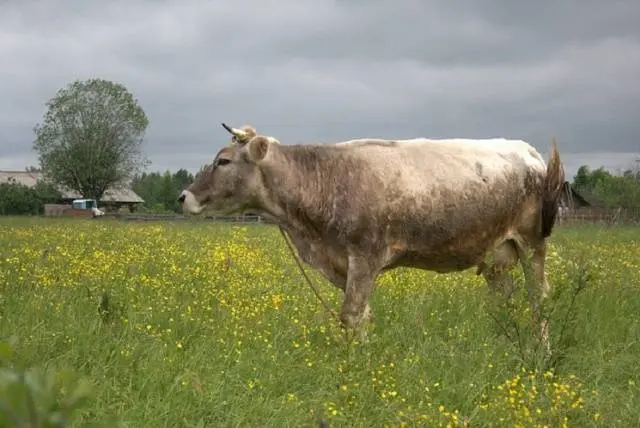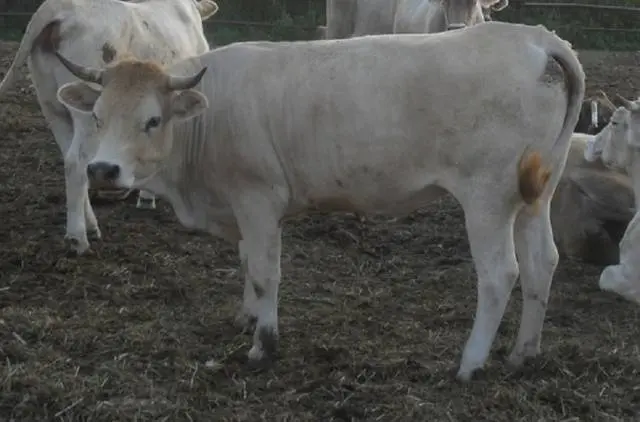Contents
There are two main types of cow breeds, differing in productivity – meat and dairy. However, in farms, the most valuable is the highly productive combined or mixed type. These are dairy cows. The Kostroma cow can be called a representative of such a special breed of cattle.
They bred it on the Karavaevo farm, trying to get a breed with the given indicators. It was planned to get hardy cows with a mixed type of productivity. Work to improve the original selected genera continued from 1911 to 1940 only in the Kostroma region. And only then dairy and beef cows of the Kostroma breed began to appear in other areas.
The Kostroma breed of cows is a unique breed of cattle, which has excellent performance in both dairy and meat production. Animals differ in various colors from dark brown to the lightest shade. There are individuals with a fawn and grayish color. The main characteristic for which the Kostroma cow is valued is its productivity. It is a rare quality when cows give equally high rates of milk yield and meat. Cows are also distinguished by a noticeable fortress, which can be clearly seen in the photo:

Description and advantages
To get to know the famous breed better, a description of its main distinguishing advantages will help. If you characterize the appearance in a few words, then you should note the rather large body length, broad back and small forehead of animals. The chest is well developed, the legs are of medium length. In adult females, the udder is cup-shaped, wide and voluminous. The weight of adult bulls reaches 1 ton and above, and females gain up to 800 kg. Despite their large size and weight, individuals are very resistant to diseases and climate changes. Another important plus is unpretentiousness in nutrition and care.

In the household, the dimensions and weight of the famous breed of cattle are slightly lower. Cows weigh about 550 kg, and bulls weigh up to 850 kg. Adult cattle and offspring are distinguished by enviable endurance. Young calves grow quickly and gain weight well.
The main advantages of Kostroma cows are:
- Productivity – dairy and meat. The yield of meat from live weight is 65%, and milk indicators range from 4000-5000 kg per year per cow. The fat content of milk is about 4%. On farms, record holders annually produce up to 9000 kg of high-quality milk.
- Skin quality. In addition to meat and milk, cattle of the Kostroma breed are valued for the density and strength of the skin, which is used in the leather industry.
- Life time. An important indicator is the longevity of Kostroma cows. They are able to maintain milk yields up to the age of 20 years and remain hardy and healthy throughout this period.
- Unpretentiousness. Kostroma Cows easily tolerate a change in diet, respond well to grazing. They gain weight much better when fed roughage than when fed a concentrated diet.
- Adaptation to weather changes. Kostroma is located in central Our Country, and cows of the Kostroma breed perfectly tolerate sharp fluctuations in climate.
- Survival percentage calves are tall, calving is easy.
- The early maturity of the breed. 15 months after birth, individuals of the Kostroma breed are ready for the reproduction of offspring. The only condition is good nutrition.
Important Care Items
The process of breeding Kostroma cows took place in difficult years. Therefore, in addition to productivity indicators, important characteristics for breeders were the endurance and unpretentiousness of livestock to the conditions of detention. But there are still features of care for the champion breed.

For cows of the Kostroma hardy breed in winter, you need an indoor barn with clean, warm bedding and without a draft.
In summer, cattle must be well-organized grazing.
For a calf, minimum conditions are organized in an unheated room. This is done to form natural immunity and increase the resistance of individuals to adverse external environmental factors. For calves provide competent care and constant monitoring. Particular attention is paid to the preparation of the diet so that the formation of a young organism in the first months of life occurs harmoniously. Antibiotics are added to the feed of calves to suppress pathogenic microflora and normalize bowel function. If the quality of mother’s milk does not meet all the necessary requirements, then the quality of food is compensated with a special nutrient solution. Although this is a rarity, because the quality of milk from Kostroma cows is always excellent.
The diet of adult animals is formed from different feeds – juicy, coarse and concentrated. The first two types should make up the majority. Otherwise, milk yields decrease in cows. For dairy cows, individual feeding is selected, taking into account the characteristics and needs of each cow.









